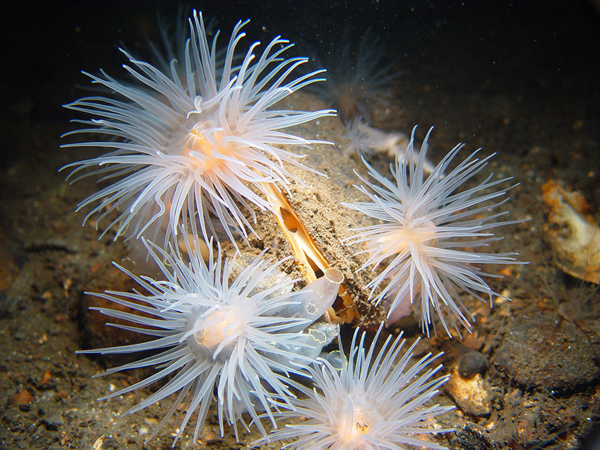Over last year, I surveyed seabirds. It wasn’t a scientific survey; I just took a notebook and logged the birds I saw while I was out sailing... and in the process I learned a lot about the birds I’d just taken for granted.
For starters, there were more species of UK seabirds than I’d expected. I couldn’t mistake the chittering tirricks, or Arctic terns, Shetland’s white swallows, but I’d vaguely lumped common guillemots and razorbills together.
Anything large and long-necked I’d taken for a scarf (shag), so it was a surprise to see raingeese (red-throated divers) on the voe.
Another surprise was that they all had defined territory, not just of species but individuals, as I would get the same numbers day after day.
Article continues below…
UK seabirds: How to identify some of the most common breeds
Sailors have been watching seabirds for thousands of years. Early navigators in the Pacific used their knowledge of how far…
Marine Protected Areas doubled to tackle Scotland’s sealife declines
The new nature conservation MPA designation orders come into force on 7 August
Two pairs of terns chittered around the marina, and a young guillemot bobbed around the boats, rarely going further than the end of the pier.
The raingeese liked narrower water too; I regularly saw two pairs in the inner voe, within a mile of the marina.
As the voe widened, there were guillemots and razorbills in sociable clumps of both species. One dozen-strong group reappeared regularly in the same place.
UK seabirds to spot from your boat
There were different species again in the Røna, the channel towards the Atlantic. Puffins bobbed in clannish groups within the shelter of the voe, but where they could still see the sea horizon, and a panicky lot they were too, dithering until I got within a few metres, then diving in a hurry.
The fulmars and kittiwakes, which I logged as ‘white ones’ because it was hard to tell which from a distance, nested on the cliffs in the Røna, and fished in that area, or further seawards.
I could have used spyglasses to be precise, but the Røna tends to funnel larger waves through, so I was generally too busy hanging on to the helm to do more than count: 21 nests on the cliffs, around 60 flying.
The Røna goes on one side of the isle of Papa Little, and the Houbansetter channel goes round the other side. Houbansetter was my richest UK seabird hunting ground.
The divers liked it, and there were a dozen pairs of dunters (eider ducks), round the mussel rafts. Tirricks nested on the beach behind the long sandbank known as the Blade, and there’d always be a few shags and herring gulls standing on it.

European shag – as seen on Papa Little headland. Photo: Arterra Picture Library/Alamy
More puffins and guillemots could be seen through the sound, and it was there that I was followed by a malevolent-looking great skua, obviously expecting me to throw him something.
Another day there I was surprised to see a lone white buoy which turned out to be a sleeping gannet.
The numbers increased as the summer went on, partly because different seabirds were arriving, and partly because I’d got better at looking.
The first chicks appeared on the water in mid July, nervous looking guillemot chicks sticking close to their fathers.
The razorbills worked in pairs to escort their offspring. After two weeks they all headed out to sea, leaving only some juvenile seabirds and a razorbill pair with chick, maybe a late hatching.

A razorbill with its chick.
By early August, my log of dozens of UK seabirds out in the outer voe and Røna had dwindled to a handful. I hadn’t realised before, due to misidentifying the raingeese, that the scarfs were also Røna birds in summer.
Now, as the other seabirds left, there were more than 30 sitting like badly-rolled umbrellas on a Papa Little headland.
As the autumn winds arrived, they moved down the voe. One stormy day I spotted a more than 30 juveniles just off the pier.
My mixed group of a dozen stayed put too. It seemed that the marina guillemot, now a handsome non-breeding adult, had invited his friends down to our sheltered end, for all through the winter I saw them on my daily walk to the pier: a couple of razorbills with a juvenile, and guillemots with an astonishing variety of plumage.
Come November the herald deuks (mergansers) arrived to join them – a long, low seabird with a wonderful red punk hairdo – heralding Christmas, of course.
It was fascinating, and I’ll definitely be watching and counting again next year.
Why not subscribe today?
This feature appeared in the February 2022 edition of Practical Boat Owner. For more articles like this, including DIY, money-saving advice, great boat projects, expert tips and ways to improve your boat’s performance, take out a magazine subscription to Britain’s best-selling boating magazine.
Subscribe, or make a gift for someone else, and you’ll always save at least 30% compared to newsstand prices.
See the latest PBO subscription deals on magazinesdirect.com






